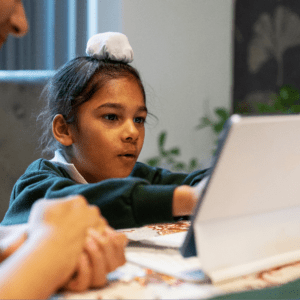Self-directed learning (SDL) is a process in which individuals take the initiative to identify their learning needs, set goals, find resources, choose and implement strategies, and evaluate their learning outcomes. It encourages students to take ownership of their learning process, fostering a sense of independence and responsibility. This article will delve into strategies teachers can use to foster self-directed learning in their classrooms.
Understanding Self-Directed Learning
Self-directed learning is an approach that places the responsibility of learning on the students. It encourages them to take control of their learning process, from identifying their learning needs and setting goals, to evaluating their own progress. Self-directed learners are proactive, resilient, and able to adapt to different learning situations.
Benefits of Self-Directed Learning

Self-directed learning offers several benefits:
- Promotes Lifelong Learning: SDL fosters a love for learning and curiosity, essential traits for lifelong learning.
- Develops Critical Skills: SDL helps students develop skills such as problem-solving, critical thinking, and self-assessment.
- Enhances Motivation: When students have a say in their learning, they are likely to be more motivated and engaged.
- Prepares for the Future: SDL prepares students for real-world situations where they will need to learn and adapt independently.
Strategies for Fostering Self-Directed Learning
1. Create a Conducive Learning Environment
Provide a safe and supportive learning environment where students feel comfortable taking risks, making mistakes, and exploring their learning independently.
2. Set Clear Expectations
Clearly communicate the expectations for self-directed learning. Students should understand their roles and responsibilities in the learning process.
3. Encourage Goal Setting
Guide students to set their own learning goals. This gives them a clear direction and purpose for their learning.
4. Promote Reflection
Encourage students to reflect on their learning process. Reflection helps students evaluate their progress, understand their strengths and weaknesses, and plan for improvement.
5. Provide Resources and Guidance
While students are expected to find their own resources, teachers should also provide appropriate materials and guidance to support their learning.
6. Facilitate, Don’t Dictate
In self-directed learning, the teacher’s role shifts from a director of learning to a facilitator. Support students in their learning journey, but allow them to steer the process.
7. Foster a Growth Mindset
Encourage a growth mindset, where students view challenges as opportunities for growth and understand that effort and persistence lead to learning and improvement.
Conclusion
Fostering self-directed learning is a powerful way to engage students, develop essential skills, and prepare them for lifelong learning. By implementing the strategies suggested above, teachers can cultivate a learning environment that encourages independence, curiosity, and resilience, equipping students for success in the classroom and beyond.





